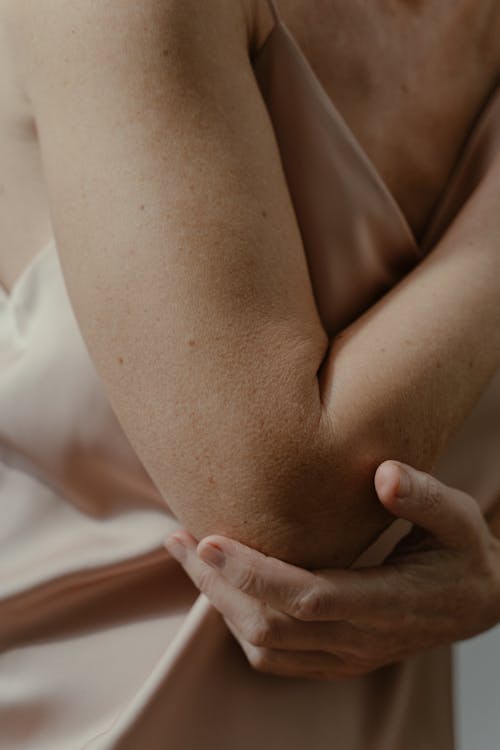
Lateral Epicondylitis
“Lateral epicondylitis” is the most common condition affecting the elbow and is referred to as “tennis elbow” when it causes pain on the outside of the elbow. In the case of inner elbow pain, it is called “golfer’s elbow.” This condition is common not only among athletes but also among individuals in professions that involve the use of hands and arms, and it is also prevalent among housewives.
1. Anatomy and Cause

The lower end of the upper arm bone, called the humeral epicondyles, protrudes on both sides to form what is known as the lateral and medial epicondyles, respectively. Numerous muscles originate from these epicondyles and extend down to attach to the wrist. Among these muscles, lateral epicondylitis, also known as “tennis elbow,” causes pain at the attachment point of the tendon from the muscle called the extensor carpi radialis brevis. It is a common condition, particularly among individuals who frequently use their arms, such as athletes who use their arms extensively, painters, carpenters, chefs, and others in professions that involve significant arm use. The primary cause of this condition is known to be overuse, and it typically occurs in the 30 to 50 age group, although it can also develop when the elbow is subjected to repetitive injuries.
2. Symptoms
If there is pain when fully extending the affected elbow and tilting the wrist backward while stabilizing it with the other hand, it can be almost precisely diagnosed as lateral epicondylitis. When lateral epicondylitis develops, pain is primarily felt on the outside of the elbow when lifting objects, pushing, or carrying.
3. Diagnosis
If pressing firmly with your fingertip around the prominent bone on the outer side of the elbow causes significant pain, it may raise suspicion of the condition.
Other physical tests to identify Lateral Epicondylitis includes
Cozen’s test
Mill’s test
Maudsley’s test
Golden standard for diagnosis of lateral epicondylitis is Ultrasound.
4. Treatment
In the early stages, it is important to rest the wrist or elbow joint and avoid any activities that exacerbate the symptoms. Applying cold packs while avoiding activities that trigger the symptoms is crucial. Non-steroidal anti-inflammatory drugs (NSAIDs), as well as heat therapy such as ultrasound and electrical stimulation, may be prescribed and can provide relief. However, the most critical aspect of treatment is a period of rest lasting 4-6 weeks.
Chiropractors may employ several techniques to treat lateral epicondylitis based on the evidence available. These techniques typically include
Soft Tissue Therapy: Chiropractors may use soft tissue techniques such as myofascial release or Active Release Technique (ART) to alleviate muscle tension and release adhesions around the affected area. This can help improve blood flow and reduce inflammation.
Exercise and Rehabilitation: Chiropractors often prescribe specific exercises and stretches to strengthen the muscles and tendons around the elbow. These exercises can aid in the healing process and prevent future episodes of lateral epicondylitis.
Ergonomic and Lifestyle Advice: Chiropractors may provide guidance on proper ergonomics, posture, and techniques for activities that may have contributed to the condition. This education can help prevent re-injury.
Modalities: Some chiropractors use modalities such as ultrasound, laser therapy, or electrical stimulation to reduce pain and promote healing in the affected area.
It’s important to note that the effectiveness of chiropractic care for lateral epicondylitis may vary from person to person. Some individuals may find significant relief through chiropractic treatment, while others may benefit more from a combination of treatments, including rest, physical therapy, and anti-inflammatory medication. Consultation with a qualified healthcare professional, including a chiropractor, can help determine the most suitable approach for an individual’s specific condition.
More information on lateral epicondylitis can be found here
